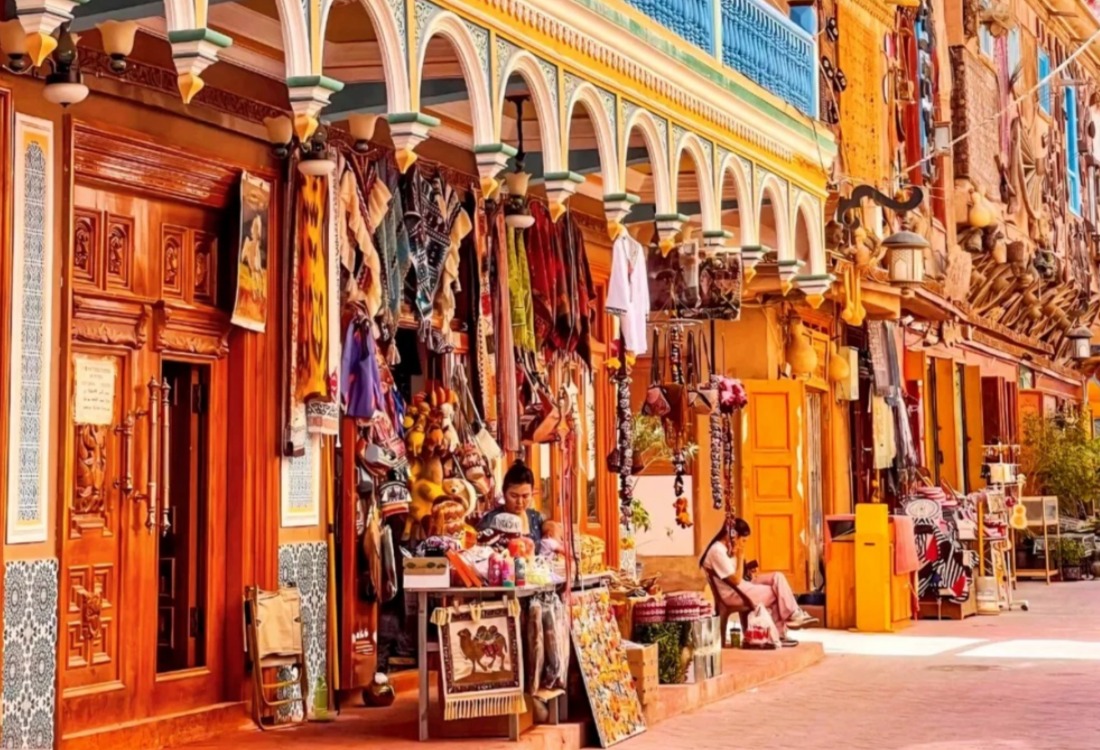Table of Contents
ToggleXinjiang, in the far west of China, is rich in history, culture, and natural beauty. As the heart of the ancient Silk Road, it has long been a crossroads of trade and diverse cultures. Today, Xinjiang offers a unique blend of traditional heritage and modern development, providing travellers with a fascinating glimpse into its past and present.
Here’s everything you need to know about this captivating region.
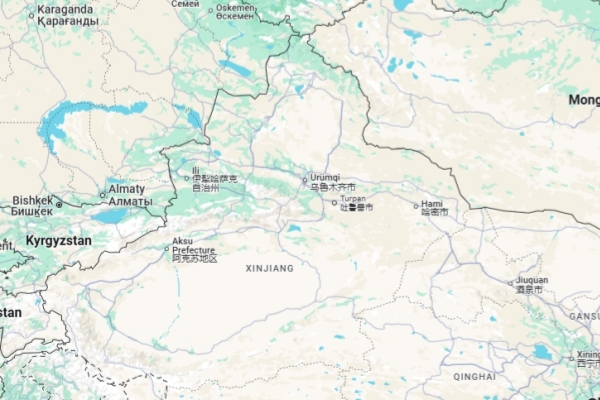
The Historical Significance of Xinjiang
Xinjiang, historically known as East Turkestan, has been a key player in the Silk Road trade network for centuries. This ancient trade route connected China with Central Asia, the Middle East, and Europe, facilitating the exchange of goods, culture, and knowledge. Xinjiang’s strategic location made it a melting pot of various ethnic groups, religions, and traditions, including Han Chinese, Uyghurs, Kazakhs, Tajiks, and many others.
The region’s role as a major trading hub contributed to the spread of silk, spices, tea, and precious stones, while also fostering the exchange of ideas, art, and religious beliefs. Cities like Kashgar, Turpan, and Urumqi became important stops on the Silk Road, attracting merchants and travellers from across the world.
Key Attractions in Xinjiang
Xinjiang’s diverse landscapes and cultural heritage make it a fascinating destination for travellers. From the bustling markets of Urumqi to the awe-inspiring mountains of the Tianshan range, the region offers something for everyone.
1. Kashgar: A Silk Road Oasis
Kashgar, one of Xinjiang’s oldest cities, is often regarded as the heart of the Silk Road. The city has been a cultural and economic hub for over two millennia and remains a vital centre of Uyghur culture. The old town, with its maze of narrow alleys, colourful bazaars, and traditional mud-brick buildings, offers a step back in time.
The Kashgar Sunday Bazaar is one of the largest markets in Central Asia, where you can find everything from spices and textiles to livestock and antiques. Other must-see attractions in Kashgar include the Id Kah Mosque, the largest mosque in China, and the Karakul Lake, which offers stunning views of the Pamir Mountains.

2. Turpan: A Desert Oasis
Located in the Turpan Depression, one of the hottest places on earth, Turpan is known for its ancient ruins, vineyards, and unique cultural landscape. The Jiaohe Ancient City (Jiaohe Ruins), a well-preserved city from the Tang Dynasty, is one of the most remarkable historical sites in the region.
The Karez Irrigation System, an ancient engineering marvel, is another highlight. This system of underground tunnels allows water from the mountains to flow to the arid desert, creating fertile land for agriculture. Visitors can also enjoy the Flaming Mountains, where the red sandstone formations are said to glow in the heat of the afternoon sun.
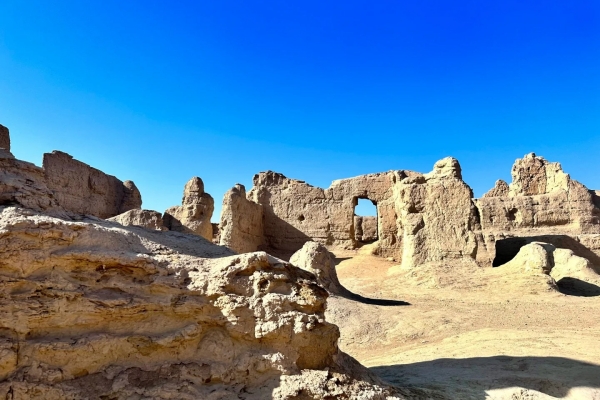
3. Tianshan Mountains: Majestic Natural Beauty
The Tianshan Mountains, a UNESCO World Heritage Site, stretch across much of Xinjiang. The range is home to dramatic landscapes, including lush valleys, glaciers, and pristine alpine lakes. Tianchi (Heavenly Lake), located in the Tianshan, is one of the most beautiful spots in the region, offering a peaceful escape from the heat of the summer.

Outdoor enthusiasts can enjoy hiking, trekking, and even skiing in the winter months. The Tianshan range also offers some of the best opportunities for adventure tourism in China, with activities ranging from mountain climbing to horseback riding.
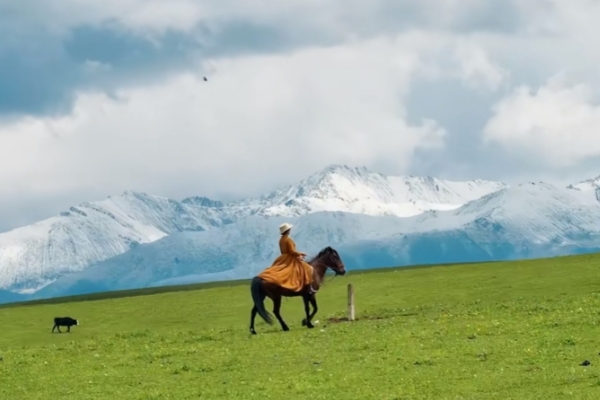
4. Urumqi: Xinjiang’s Modern Metropolis
Urumqi, the capital of Xinjiang, is a modern city that combines the best of both worlds—traditional Uyghur culture and contemporary development. While in Urumqi, visitors can explore the Xinjiang Regional Museum, which showcases the region’s history and ethnic diversity, or visit the Grand Bazaar for an immersive shopping experience.
Urumqi’s position as a major transport hub makes it an excellent base for exploring the rest of Xinjiang. The city also boasts a thriving food scene, with plenty of restaurants offering delicious Uyghur dishes such as lamb kebabs, hand-pulled noodles, and pilaf.
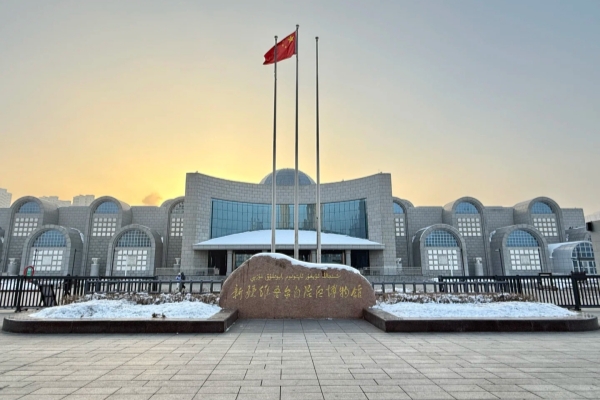
Why Visit Xinjiang?
Xinjiang offers a unique travel experience that combines rich cultural heritage with stunning natural landscapes. Whether you’re interested in history, culture, or adventure, Xinjiang has something to offer.
- Cultural Heritage: As the heart of the ancient Silk Road, Xinjiang is a melting pot of diverse cultures, religions, and traditions. This cultural blend makes the region a fascinating destination for history buffs and those interested in learning about China’s ethnic diversity.
- Natural Beauty: From the snow-capped peaks of the Tianshan Mountains to the desert landscapes of Turpan, Xinjiang is home to some of China’s most breathtaking natural scenery.
- Unique Cuisine: Xinjiang is known for its distinct culinary traditions, with dishes like lamb kebabs, hand-pulled noodles, and pilaf offering a taste of the region’s diverse cultural influences.
Practical Information for Visitors
- Best Time to Visit: The best time to visit Xinjiang is during the spring (April to June) and autumn (September to October), when the weather is mild and the landscapes are particularly beautiful. Summer can be very hot in some areas, while winter can be cold, especially in the northern regions.
- Getting There: Urumqi is the main entry point for international visitors, with a well-connected airport offering flights from major Chinese cities. The region is also accessible by train and car.
- Language: While Mandarin is widely spoken, many locals also speak Uyghur. It can be helpful to learn a few basic phrases in Mandarin, though many tourist attractions have English signage.
Xinjiang, the heart of the Silk Road, offers a rich blend of history, culture, and natural beauty. From ancient cities like Kashgar to the Tianshan Mountains and Uyghur cuisine, it provides an unforgettable experience, blending the past with modern comforts.

